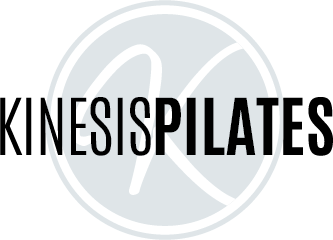A plethora of new fitness options are popping up in Denver, so why consider Pilates?
Classical Pilates is not a trend, but a tried-and-true method of changing your body and life that's been around since the early 1900s. It's lasted so long because it's so highly effective.
What's the difference between Pilates and Barre?
Barre classes, as well as Lagree Fitness classes (like those at Pilates Evolution), tend to focus on muscular endurance through high repetitions of the same movement targeting specific muscles. Classical Pilates believes that the whole body should be challenged in every exercise, and that fewer repetitions is preferable so that form and alignment are not compromised. If you need additional challenge, rather than adding more weight or reps, you learn more difficult exercises.
How can you increase strength with so few reps?
Pilates challenges the very definition of strength. Most exercise regimens strengthen our big, gross motor movers (rectus femoris, rectus abdominus, etc.) while completely neglecting muscles involved in posture, smaller muscles surrounding our ball and socket joints, muscles of the feet, etc. When you participate in these types of classes, you tend to strengthen what is already strong and stretch what is already long, reinforcing and exacerbating imbalances. Through good alignment and attention to detail, Pilates teaches how to use all the little (and some not-so-little) postural and supporting muscles, like the transverse abdominus, deep six rotators, and rotator cuff. When all the muscles surrounding a joint work uniformly, strain and injury are avoided and posture improves.
How does Pilates approach flexibility?
Most fitness classes are organized so that strength and flexibility are separate, with participants likely stretching at the end of a class if at all. Pilates combines both goals in each exercise. You lengthen your muscles to their end range, then contract them. The result is that the muscle is stronger not just in the belly, but also at the attachments, where muscles tend to be prone to tearing. This functional flexibility prevents injury.
How can I change my body without working to the point of soreness?
Right now in fitness, it is trendy to work to the point of fatigue and soreness. Pushing a muscle past its capabilities causes lactic acid build-up which leads to soreness, and necessitates rest days for proper recovery. Pilates likes to work below that threshold. We challenge the muscle, but we don't believe in "no pain, no gain." Because we don't break down muscle tissue in Pilates, you can recover quicker and practice it every day. This type of exercise is more gentle on the body, doesn't wear you out, is more sustainable over your lifetime, and promotes healthy immunity. And even though you aren't horribly sore after workouts, you can still significantly change your body.
Can I get a cardiovascular workout with Pilates?
Initially, you must relearn movement patterns and lay a strong foundation for your Pilates practice, so you may move slower as your brain processes a new way of doing things. Once your body is better organized and more balanced, you can pick up the tempo and intensity to challenge yourself even more. Many advanced practitioners of Pilates break a sweat and can receive cardiovascular benefits from doing Pilates at tempo.
Why is Pilates more expensive than other forms of exercise?
Pilates teachers are highly trained. I used to be a Strength and Conditioning Coach (a step above a personal trainer) and that certification required no classes, reading one textbook, and taking an exam. Many aerobics instructors are certified after weekend courses. In stark contrast, most Pilates teachers are required to complete at least 450 hours of training. My program was over 950 hours and took a full year to complete. Pilates instructors are often excellent at correcting form and making appropriate modefications so that you don't hurt yourself while exercising.
Pilates is also performed on specialized, expensive equipment, which also increases the cost of sessions. But Pilates has so much added value, from the highly trained teachers and amazing equipment to the potential to truly change the way you hold yourself and move. It's also one of the most effective ways to reduce musculoskeletal pain. In fact, I have clients who have experienced things like back pain for decades that was resolved in a month or two of Pilates. Some have seen multiples specialists without relief, but found it in Pilates. Pilates is not just a workout, it is a game changer.
Sophia is a Certified Pilates Teacher and owner of Kinesis Pilates, which is opening at the Stanley Marketplace in the Summer of 2017.
